Spine Treatments
Get expert treatment for your spine, back and neck pain and start enjoying life again. Get your back sorted! Contact us today.
Spinal Conditions
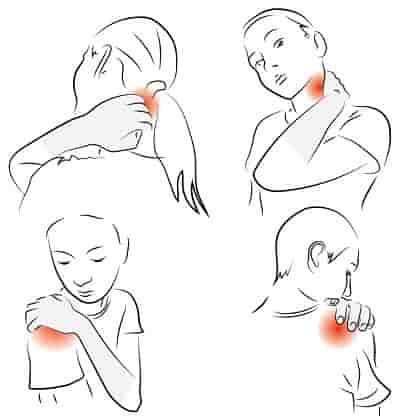
Neck and Arm Pain
Cervical Radiculopathy is a condition where a nerve in the cervical spine is compressed (pinched) by a slipped disc or bone. It often gets manifested as pain which travels from the neck into the shoulder and to specific regions of the upper arm, forearm, hand, or fingers.
In numerous cases, numbness or weakness in certain muscles might accompany the pain.
For further information, please visit our Neck and Arm Pain Treatment page. If you have a query or wish to book an appointment with our Neck and Arm Pain Specialist, you can either call us or visit our Contact page.
Lower Back Pain
The majority of individuals experience lower back pain (of varying degrees) at some point in their lives. The cause and treatment for lower back pain is often unclear to patients. This is where a spinal surgeon comes in. A spinal surgeon will do a thorough analysis in order to rule out any serious causes of lower back pain. This helps in offering reassurance that the individual is not at any serious risk and is unlikely to harm his/her back while working or exercising.
For further information, please visit our Lower Back Pain Treatment page. If you have a query or wish to book an appointment with our Lower Back Pain Specialist, you can either call us or visit our Contact page.
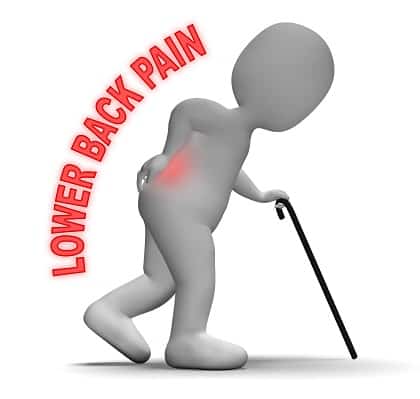
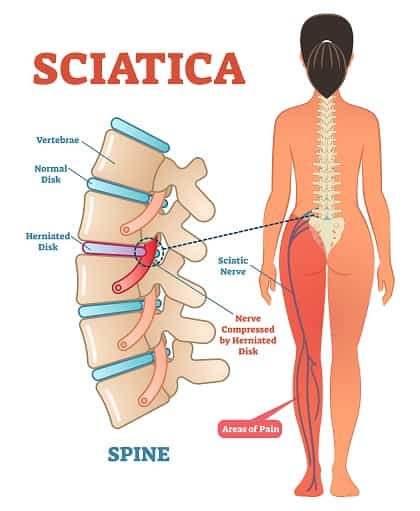
Sciatica and Leg Pain
Sciatica essentially refers to any pain which can be felt in the leg (radiating from top to bottom). The large nerve running down at the back of the leg is called the sciatic nerve and is composed of numerous spinal nerves.
Typically, spinal surgeons may refer to this kind of pain as radicular pain or radiculopathy instead of sciatica. This is because it is generally a spinal nerve which causes the pain instead of the sciatic nerve.
For further information, please visit our Sciatica and Leg Pain Treatment page. If you have a query or wish to book an appointment with our Sciatica and Leg Pain Specialist, you can either call us or visit our Contact page.
Spinal Stenosis
When we talk about spinal stenosis, we are essentially referring to a condition in which the spinal canal becomes narrower and there is a reduced amount of space for the nerves. This condition typically sets in as a result of acquired degenerative changes.
Think of the intervertebral disc as the tire of a car which gets deflated and sags over a period of time. When this happens, there is an overall loss of height to the spinal front. Also, the facet joints located at the back begin taking a greater amount of load. This ultimately results in the degeneration of the facet joint and the ligaments and joints might get inflamed and enlarged.
For further information, please visit our Spinal Stenosis Treatment page. If you have a query or wish to book an appointment with our Spinal Stenosis Specialist, you can either call us or visit our Contact page.
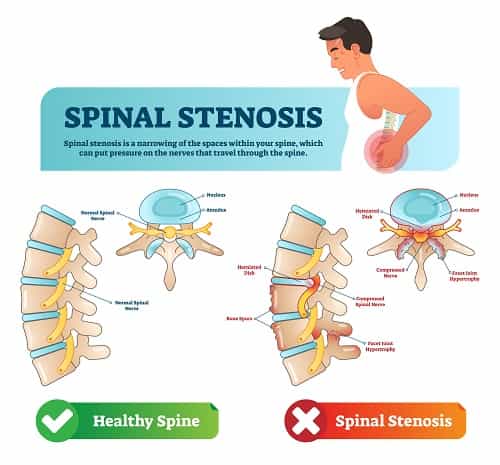
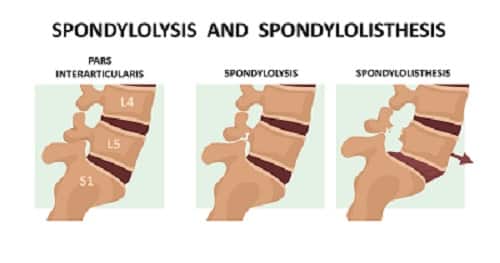
Spondylolisthesis
Is a condition where the vertebra slips forward in relation to the below vertebra. That might be the cause of the back pain. In most cases it is associated with pressure on the spinal cord causing spinal stenosis or direct pressure on the outgoing nerves.
For further information, please visit our Spondylolisthesis Treatment page. If you have a query or wish to book an appointment with our Spondylolisthesis Specialist, you can either call us or visit our Contact page.
Sacroiliac Joint Pain
The sacroiliac joint is located near the spine’s bottom part (above the tailbone and below the lumbar spine). It still isn’t absolutely clear as to what causes sacroiliac joint pain but changes in the standard joint motion might be the culprit behind this condition.
For further information, please visit our Sacroiliac Joint Pain Treatment page. If you have a query or wish to book an appointment with our Sacroiliac Joint Pain Specialist, you can either call us or visit our Contact page.
.
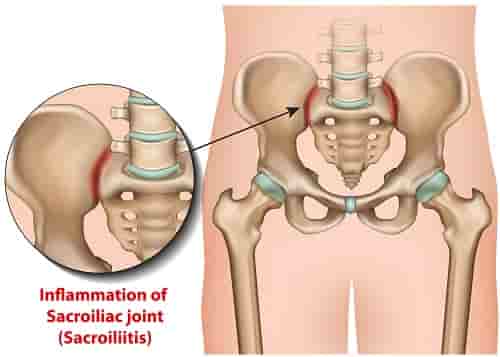
Spinal Conditions

It’s a known fact that cervical radiculopathy often gets manifested as pain which travels from the neck to specific regions of the forearm, hand or the arm. In numerous cases, numbness or weakness in certain muscles might accompany the pain. More Details …

The majority of individuals experience lower back pain (of varying degrees) at some point in their lives. The cause and treatment for lower back pain is often unclear to patients. This is where a spinal surgeon comes in. A spinal surgeon will do a thorough analysis in order to rule out any serious causes of lower back pain in the patient. This helps in offering reassurance that the individual is not at any serious risk and is unlikely to harm his/her back when using it. More Details …

Sciatica essentially refers to any pain which can be felt in the leg (radiating from top to bottom). The large nerve running down at the back of the leg is called the sciatic nerve and is composed of numerous spinal nerves. Typically, spinal surgeons may refer to this kind of pain as radicular pain or radiculopathy instead of sciatica. This is because it is generally a spinal nerve which causes the pain instead of the sciatic nerve. More Details …

When we talk about spinal stenosis, we are essentially referring to a condition in which the spinal canal becomes narrower and there is a reduced amount of space for the nerves. This condition typically sets in as a result of acquired degenerative changes.
Think of the intervertebral disc as the tire of a car which gets deflated and sags over a period of time. When this happens, there is an overall loss of height to the spinal front. Also, the facet joints located at the back begin taking a greater amount of load. This ultimately results in the degeneration of the facet joint and the ligaments and joints might get inflamed and enlarged. More Details …

Is a condition where the vertebra slips forward in relation to the below vertebra. That might be the cause of the back pain. In most cases it is associated with pressure on the spinal cord causing spinal stenosis or direct pressure on the outgoing nerves. More Details …

The sacroiliac joint is located near the spine’s bottom part (above the tailbone and below the lumbar spine). It still isn’t absolutely clear as to what causes sacroiliac joint pain but changes in the standard joint motion might be the culprit behind this condition. More Details …
Spinal Procedures
This injection is given to reduce inflammation and provide pain relief when the back pain is originating from the facet joints. The injection is a mixer of local anesthetics with long acting steroid injected into the joint.
It is a day surgery procedure, done in theatres under local anesthetics and x-ray guidance. With this procedure, there is a low risk of bleeding, infection at the side of the injection, allergic reaction or no improvement of the symptoms.
It is a procedure of injecting bone cement into the fractured vertebra in order to stabilise it and reduce the pain. The procedure is carried out under general anesthetics and x-ray guidance.
As with every surgery, there are risks and complications. With vertebroplasty there is a risk of bone cement leakage near the spinal cord and the nerves, anesthetic complications, movement of cement particles into the blood vessels causing clots, infection, bleeding, sensitivity to cement, or problems with positioning the needles before injecting the cement.
Herniated disc causes pressure on the nerve root which causes leg pain if it is in the lower back or in the arm if it was in the neck.
The injection is a mixer of local anesthetics with long acting steroid injected near the nerve. It reduces the inflammation and provides a pain relief. It is a day surgery procedure, done under local anesthetics and x-ray guidance.
There is a low risk of bleeding, infection at the side of the injection, allergic reaction, nerve injury, leakage of fluid from the spinal cord or no improvement of the symptoms.
It is a procedure to remove the bulging (herniated) part of the disc that is causing pressure on the nerve. There are several techniques when preforming the operation for lumbar disc protrusion. Expected outcomes from all methods of treatment are similar. The Choice of operation will be discussed with the patent in advance.
Endoscopic Discectomy is a keyhole surgery with a small incision in the back less than 2 cm.
Microdiscectomy is an open technique with a midline incision in the back.
All surgeries are done under general anaesthetics. Patient is mobile after the surgery. Depending on which technique, some surgeries are done as a day surgery.
Most of the neck disc protrusions are treated with approaching the neck from the front, hence the name Anterior Cervical.
Coming through the front of the spine, the entire disc and the bulging part is removed which was causing pressure on the nerve and spinal cord to relief the symptoms. By removing the content of the disc, there will be an empty space; therefore, to preserve the anatomy and maintain the height, a spacer is placed in that area.
Decompression process is the relief of pressure on spinal cord and the nerves and generating enough space around the spinal cord and the nerves so they are less affected.
The procedure is done under general surgery. There are different methods and approaches which the surgeon will discuss with the patient in advance.
If there is any instability issue, the surgeon will be stabilizing the back, using different methods and metal work.

